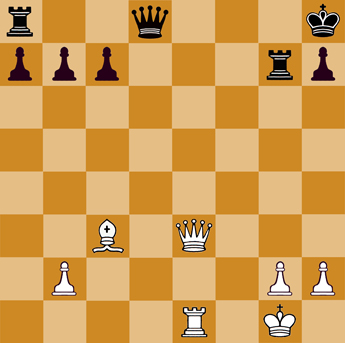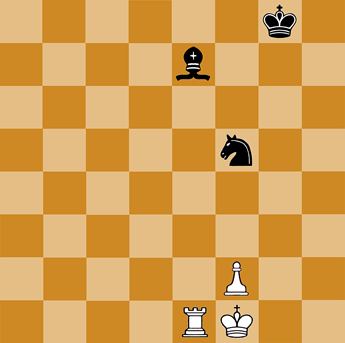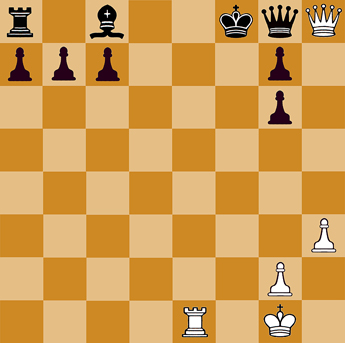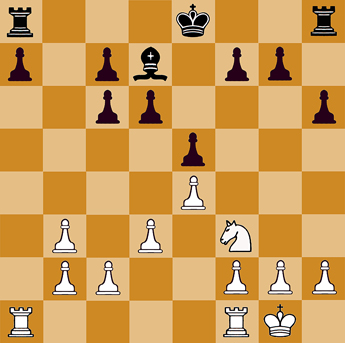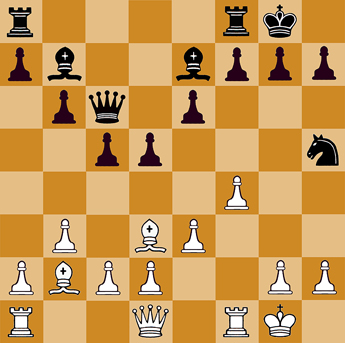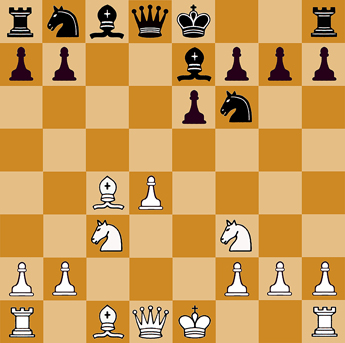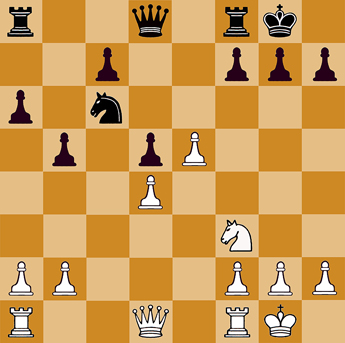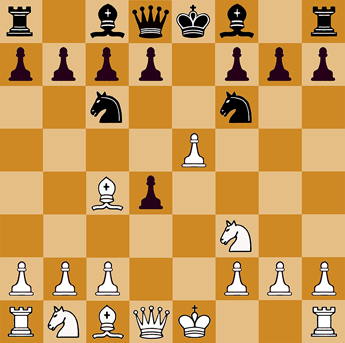|
In the opening the forces have marched up to battle array. Then, having got into touch with each other, they come into collision. How is the intelligent player to conduct a campaign that is approaching a crisis? His men, at the start so obstructed, are now free to move about. Possibilities for attack and defense are almost unlimited. How, out of the multitude of possibilities, is he to select the right move-or, at least, a move that is good, according to his present level of development. His first consideration should be that his moves, (for chess mac and PC) to be intelligent, must involve Connection and Plan. A disconnected move is one made with little thought about future moves made by ones-self and possible scenarios made by the opposition. It suggests itself probably as being in the nature of a trap, to the opposition, but in reality it is a hastily made move. If the opponent is taken unawares the scheme succeeds, but should the opponent see the hastily made move for what it is, the attempt recoils on the schemer. Here then we begin to see that “Force,” is a concept that needs to be included in any game playing strategy. Of two players that are ready for a battle, one is entitled to gain the upper hand which has the most force behind it. This principle is fundamental. If your experience does not conform to it, not the principle but your application of it is at fault. In that case you have to review your valuation of the forces engaged and be on guard for mistakes. If your strategy was precise, the weaker side cannot gain a lasting success. An initial success may happen-but not a lasting success.
Strange as it may seem, the human mind has taken a long time to learn how to apply the concept of force to chess. The mistake committed was to confuse force and effect. Force is composed of two factors, one of them being effect; the other one a thing susceptible to effect. An effect and a target combined make a force. As an example a moving Q is capable of many effects, but if the hostile men are protected even the Q is dependent upon the co-operation of other pieces in order to extend force. A position, as a rule, contains elements strongly susceptible to effects. The technical term for such an element is a “weak” point or “weakness.” Thus the position of the K is weak when aggressors find few obstructions in the K,s quarter, and a player discerns a “weak point” in the opponents camp when he sees that the opponent cannot attack a piece placed in that point on the chess mac and PC. If that point is occupied by a man which shows strong force from that position in relation to his other pieces is said to have a “strong point.”
A concentration of effect on a weakness will pay only if that weakness is stationary, for otherwise, by moving the weakness, the concentrated affect would hit a empty spot and therefore be wasted. Stationary weaknesses are, a King who can no longer castle and is defended by relativity few pieces, or to whom access is easy; a pinned piece, a piece of little movement. For instance one which has been shut in, or whose movement would entail heavy loss, or in a frequent case, a blocked pawn.
The Black R on Kt2 being pinned is a target calling for concentration of effect of the White pieces. 1 Q-K7, White wishes to eliminate, to exchange the Black Q which not only would defend but threaten counter attacks at the same time. 1 …, Q x Q. (Not so good would be 1 …, Q-KKt1; 2 Q x P, R-QB1; 3 B x R ch. wins). 2 R x Q, R-KKt1; 3 R x P, P-Kt3; 4 R x P, P-R3; 5 R-Kt7, K-R2; 6 B x R. The R has to be captured since it threatened to move. 6 …, R x B; 7 R x P or R x R and wins by superiority of force.
The Kt must not move because he is abandoning the B which he protects. It is therefore the indicated target. 1 R-K5 wins B or Kt.
The King has to guard the Q, and therefore has little movement and is a welcome target. 1 R-K8 ch. Wins Q for R.
White spies a target; the QRP, which, being unable to receive support from a pawn, handicaps the Black pieces that have to support it. 1 R-R6, which binds the B to its post. Now the target is stuck. 1 …, K-Q1; 2 KR-R1, and now the target is overwhelmed; 2 …, K-B1; 3 R x P, R x R; 4 R x R, K-Kt1; 5 R-R1. White has won a pawn and therefore goes for the K with a considerable advantage.
Blacks K side is weak because the White Bishops bear down upon it. But White must hurry, for Black contemplates the obstruction of one of the Bishops by P-KB4. White conceives a plan to expose the Black K, then to limit its range, and finally to assault it decisively. 1 B x P ch., K x B; 2 Q x Kt ch., K-Kt1; 3 B x P, K x B. The K is now badly exposed. 4 Q-Kt4 ch., K-R2 (if K-B3; 5 Q-Kt5 mates). Now the K has little movement. 5 R-B3. The decisive R-R3 cannot be delayed. 5 …, P-K4. To allay the fierce onslaught by the sacrifice of the Q; 6 R-R3 ch., Q-R3; 7 R x Q ch., K x R; 8 Q-Q7 wins another piece and the game.
The analyst examines all points of the board to sort out which side is the superior force. Each side has the advantage in its own camp. The point Q5-Blacks Q4- is hotly contested. The White QR will be utilized sooner than the Black QR, consequently White is stronger than Black on the QB file. Also on the central points K4, K5, QB5. Black cannot keep the balance and must eventually give ground.
The Black Kt is momentarily in a weak position, but can take up a safe and strong post on K2. The Black QBP cannot be protected by pawns, and if attacked by White Rooks becomes a handicap to some of the other Black pieces. It will pay to experiment with this position -1 …, P-KB3, to get the R into action; 2 R-B1, Q-Q2; 3 Q-B2, and wins the QBP. Again: 1 …, Kt-R4; 2 R-B1, Kt-B5; 3 P-QKt3, Kt-Kt3; 4 R-B6, Q-Q2; 5 Q-B2, R-R2; 6 R-B1, Kt-R1; 7 Q-B5, Kt-Kt3; 8 P-KR3. White must not take the BP at once (8 R x BP? R x R; 9 Q x R, R-QB1 wins) but the P remains weak and is certain to fall in the end. Fleeting, or temporary weaknesses, such as a moving but unprotected man, or a piece of high value on a point easily accessible, may also be taken advantage of, but by a different process than that used to attack a weak piece due to the lack of movement. To attack a temporary weakness merely to make the power of ones pieces manifest is bad play. The attack is useful only when with the same move some other advantage is gained. For instance, when an attack on several moving weaknesses is simultaneously done. The defender then has the hard task of escaping from several perils, and has only one move to do this with. A task solvable only by counter attack against some momentary weakness of his assailant.
White attacks the temporary weakness KB6, he has himself a temporary weakness on QB4. Black, instead of withdrawing the Kt counter-attacks with P-Q4! The threat to capture the B is meant as compensation for Whites threat to capture the Kt. A solid and permanent advantage is therefore gained by Black. What does the term “overwhelm” imply? Under what conditions is a weakness overwhelmed?
|
